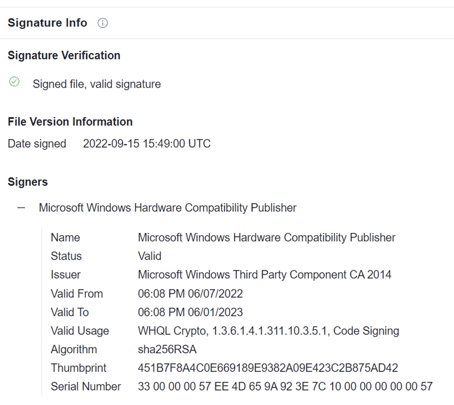 The malicious abuse of several developer program accounts in Microsoft’s Windows Hardware Developer Program allowed threat actors to have malware evade detection.
The malicious abuse of several developer program accounts in Microsoft’s Windows Hardware Developer Program allowed threat actors to have malware evade detection.
It’s a long-term play, but one that is quite an impressive feat – threat actors sought to compromise credentials that gave them access to submit malware-embedded drivers for Microsoft certification – something that would cause security products to see them as trustworthy and allow them to run. The signature below shows how very valid these drivers appear to an attacked system - there isn't a hint that anything is afoot when you look at it:

According to security vendor SentinelOne, the drivers contained POORTRY and STONESTOP malware, part of a small toolkit designed to terminate antivirus and EDR processes. Security vendor Mandiant observed a threat group designated only as UNC3944 using SMS phishing as the initial attack vector to obtain credentials that would later be used to gain access to systems to deploy the signed driver.
The use of a driver is a brilliant touch, but threat actors still need to gain access to systems – which means obtaining credentials, a method of entry, etc. Usually this involves some interaction with a user (via texting, in the case of Mandiant’s research). And while it’s possible to see these kinds of driver-based efforts begin with vulnerabilities, it’s necessary for organizations to ensure any email- or web-based initial access is relegated to an absolute minimum – something accomplished by enrolling users in ongoing Security Awareness Training to ensure they see malicious content for what it really is.
 The ModStore Preview includes:
The ModStore Preview includes:




